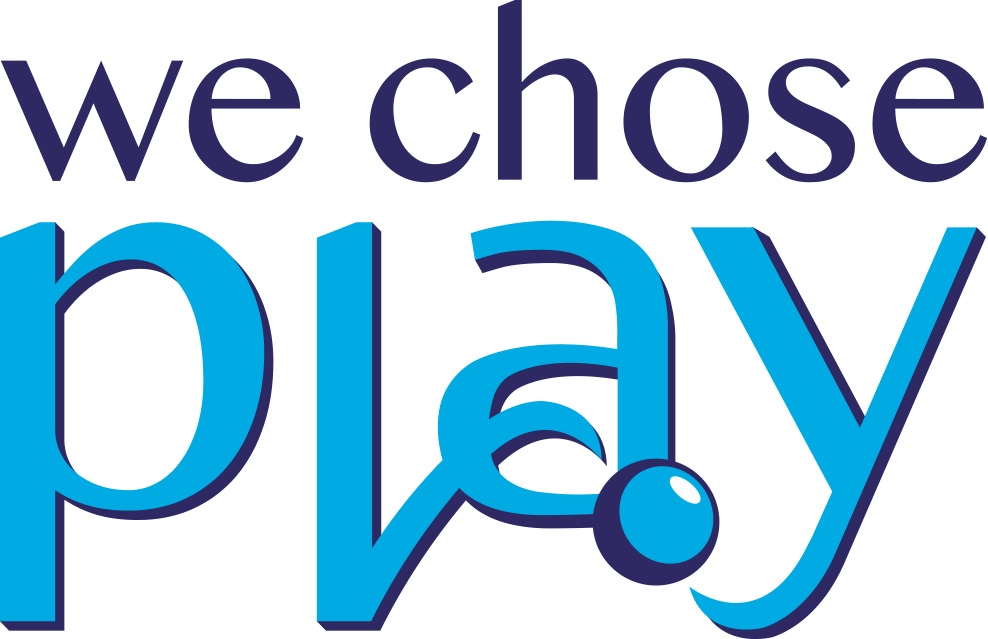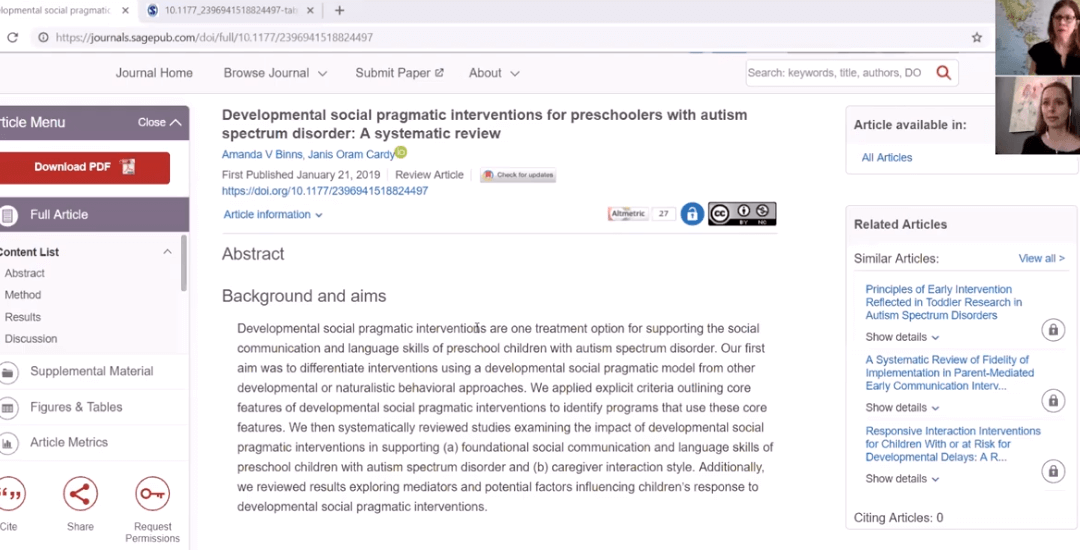Speech-Language Pathologist Amanda Binns returns this week to discuss her new publication entitled, “Developmental social pragmatic interventions for preschoolers with autism spectrum disorder: A systematic review” co-authored with Janis Oram Cardy. It is an open access publication available for free download. This review is only about preschoolers and in reference to communication interventions only. It is written for professionals who work with children on communication, for policy makers, and researchers.
A review of Developmental Social Pragmatic interventions with Amanda Binns
What is a Developmental Social Pragmatic (DSP) intervention?
A Developmental Social Pragmatic (DSP) intervention integrates principles from developmental psychology, transactional models of language development, and social pragmatic models of language acquisition. Developmental psychology follows a typical developmental trajectory where in language development, you target joint attention, engagement, and reciprocal interactions before considering targeting words or putting words together.
In transactional models of language development, we think about not just looking at the child in isolation, but looking at the parent-child interaction or two children interacting. What are both parties doing to support and enhance the child’s communication? And finally, the social pragmatic model focuses more on the child’s intent, why the child is communicating, and how the child is using language in meaningful ways instead of looking at grammar, for instance.
The social pragmatic models are interested in the child using meaningful language and whether or not they are able to use their language in different contexts, with different people, and for different purposes. This is about communication: how the child uses gestures, facial expressions and body movements in meaningful and appropriate ways within their interactions to fit their context before you start mapping language on to it. Language develops through these foundational capacities.
What does a DSP intervention entail?
Amanda and her colleague had a specific method to search publications about interventions that targeted communication in preschoolers with autism. They noticed that there were many publications that described their interventions as DSP although some would not actually meet the criteria of a DSP intervention. They wanted to have a really good understanding of what DSP interventions entail.
Once they identified publications that claimed to use DSP interventions, they wanted to determine if they met the criteria of DSP interventions: a typical developmental trajectory that aligns with developmental psychology, looking at the dyad of parent-child interactions which aligns with the transactional model of language development, and whether or not they were using the social pragmatic elements that focus on meaning and functional language use, rather than on grammatical structures and words.
Categorizing interventions as DSP or not
If you click on the link to the publication here, you will find that Table 1 outlines the criteria for which interventions qualify for DSP. It includes the list of interventions that publications identified as being DSP. One of the criteria is whether or not the intervention occurs in a naturalistic setting, for instance. Amanda says it’s important to note that they added ‘use of explicit or indirect prompts’ as a criterion because the focus of DSP is about reading the child’s intent and using language in functional ways.
This is fundamentally different than prompting a child to use expected outcomes. For instance, saying “A dog goes ___” or “Say please!” gives the child only one correct way to respond versus scaffolding to support the child’s spontaneous generation. In this case, if you say “Ooo, look at the doggie! Woof woof!” the child could respond by saying “Woof woof!” or by moaning if they don’t like dogs, or pushing the representation of the dog away. This would be more in line with DSP interventions.
Integrating Behavioural and Developmental Approaches
There’s a push towards integrating behavioural and developmental models as there’s more and more support for using developmental models, particularly with younger children, where you have to work on foundational capacities before you can work on language, Amanda says. So, it’s very important to think about what pieces of developmental models to bring into behavioural models. If we are thinking about what elements of different interventions really support children, then we need to dissect what explicit prompting is doing for communincation and language development.
Do we want to use explicit prompting to support early language development or use more indirect prompts? Amanda says it would be interesting to look at the core features of DSP interventions to figure out which of their core strategies we should be thinking about if we are looking at the recent Naturalistic Developmental Behavioural Interventions (NDBI) models. For example, should we be responding to child’s intent regardless of the goal? DSP interventions will respond to the child’s intent regardless of the goal which NDBI strategies typically do not do.
Evidence for DSP interventions
Table 1 helps compare apples to apples showing which interventions meet the criteria for the category of DSP. Later in the paper they look at what evidence exists for the DSP interventions. They found that there was compelling evidence that DSP interventions support early foundational communication capacities such as joint attention, social referencing, initiation and reciprocity, for example.
The findings for the child’s language post-intervention were interesting. With the typical standardized language tests used to evaluate the language, they did not find consistent positive findings for the child’s language post-intervention, but these tests test things that DSP interventions don’t target, such as grammar, etc. so it wasn’t surprising.
However, in the studies that evaluated the child’s language post-intervention using natural outcome measures that closely models what actually happens at home or school, such as natural language samples or natural video-taped interactions, positive results were found. This makes sense as language would be generalized when learned in natural settings.
The review also looked at what parents were being coached on that was connected to positive outcomes. Parent responsiveness drove improvements in language as well as synchronous behaviour: really joining in with the child’s interest. As a profressional, Amanda finds this informative in that she can help support parents to read the less noticable intentions that the child is communicating and show them how to join in with the child’s interests.
Next steps
Amanda says that besides examining the features of DSP models that are effective to combine with behavioural approaches like the current wave of NDBIs, future research should also test the mechanisms of the interventions to see what is driving the change for the child so we can better individualize the intervention for each child to support their communication development.
Thank you to Amanda Binns for taking the time to discuss the systematic review paper. Please download your copy at the free access website. If you found this post helpful or informative, please consider sharing it on Facebook or Twitter and feel free to add comments or relevant experiences in the Comments section below.
Until next time, here’s to affecting autism through playful interactions!
Affect Autism was selected by Feedspot as one of the Top 20 Autism Podcasts on the web!




This is Amazing, I would really want to study more about this. I´m a Clinical Director in Brazil, and Hanen Certified Speech and Language Pathologist (DSP approach), but we do offer aba and Denver services in our clinic, and we work hard with both, but it´s easier said than done. This REALLY is my main goal, when to and how to introduce one or and the other. Where can I find more research about this?
Hi Natalia, Please check the Start Here menu on my website and scroll through all the topics to learn more about DIR/Floortime and how it is the most client-centered of all the approaches. I have many podcasts with expert training leaders who are clinicians working in clinics with clients full-time and you can learn so much about this approach. I hope this helps.